What if you want to make a recipe but you don’t have the buttermilk that is in the ingredients list? Is there even a substitute for buttermilk? Why not just use regular milk? The answer on substituting for regular milk is dependent on what other ingredients are in the recipe. For example, if the rising agent is baking soda, the the buttermilk is often used to create a chemical reaction to rise your cake. However, if there is baking powder in the recipe, you can usually substitute regular milk.
The acid in the buttermilk reacts with baking soda and creates carbon dioxide which helps rise the breads, cakes and brownies. The little bubbles these two create to make fluffy baked goods is much like those volcanoes we would make in science class with baking soda and vinegar. Remember those?
Now that you know why you need buttermilk in many recipes, how do you make a buttermilk substitute? You will need milk and an acid such as lemon juice, cream of tartar or vinegar. The more fat in the milk, the more it will separate in the end, so don’t panic if your whole milk looks curdled. This is completely normal and is science at work.
When it comes to which type of acid to use, it’s your choice. I recommend using vinegar for two reasons: it’s the cheapest and doesn’t give the taste of lemons to your baked goods. However, if you are making a lemon cake, perhaps the lemon juice would be a better option! In the recipe below I’ll give measurements for each of the acids so you can chose which one is best for you.
Finally, there is always my favorite: simply have a container of powdered buttermilk in the pantry. It lasts for over a year if properly stored and I think it’s the ideal substitute as it tastes better for those recipes with just a few ingredients. Also, it’s even easier as you don’t have to have milk or an acid on hand!
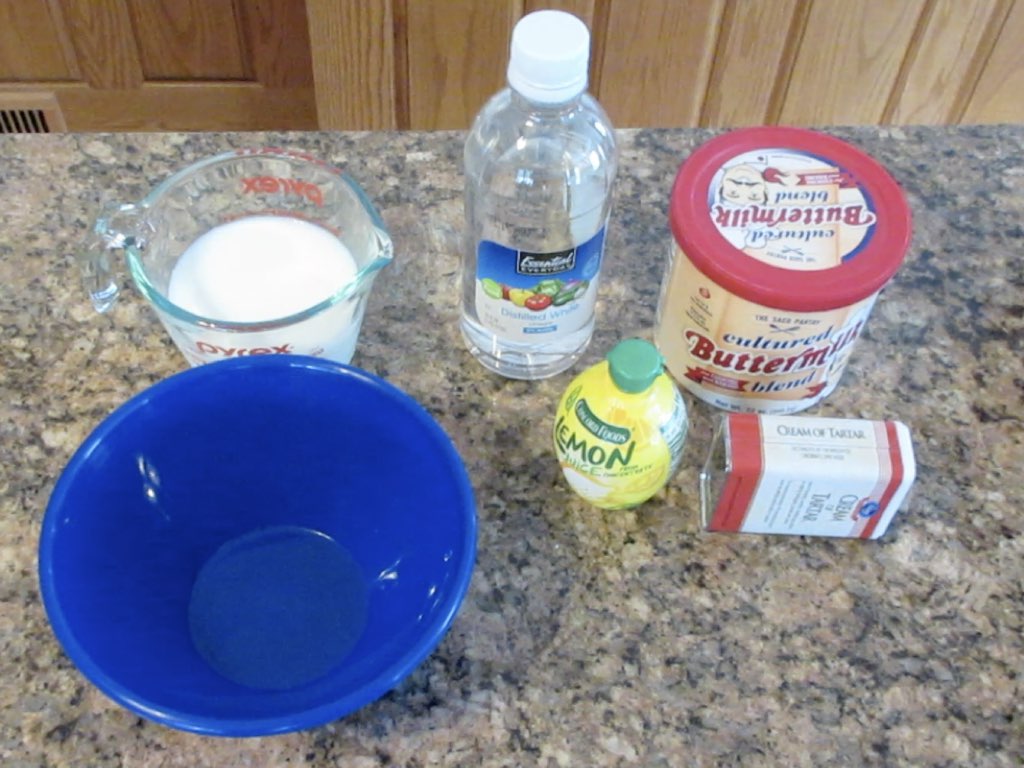
You will need milk and an acid. 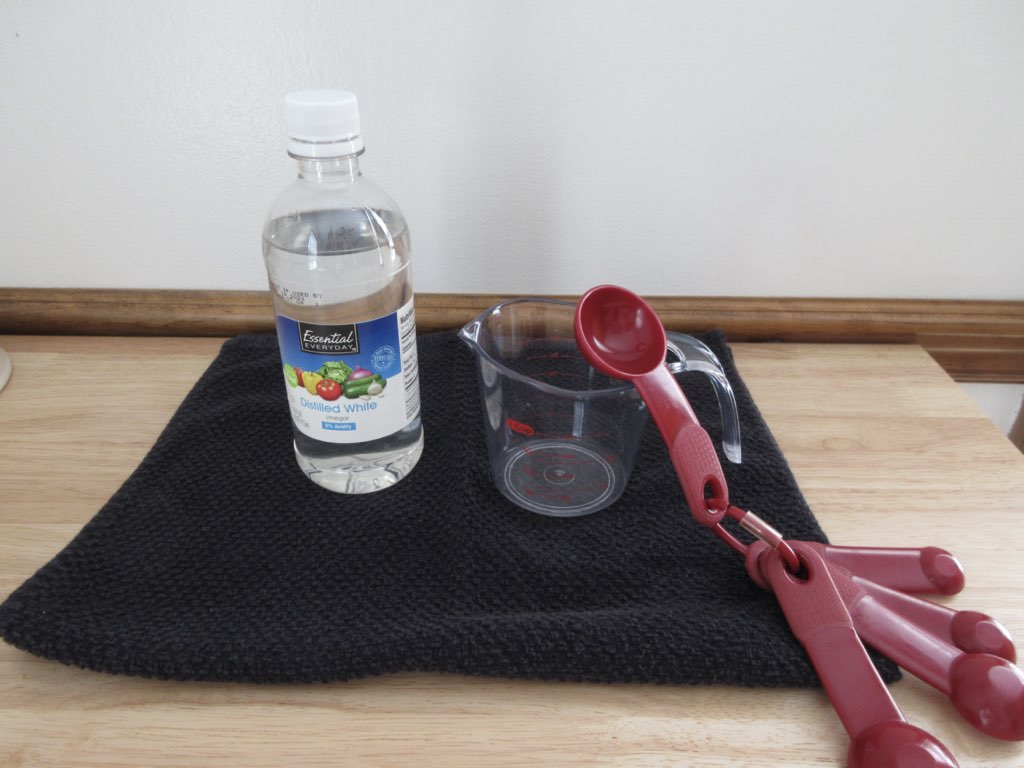
Let’s use the cheapest and one without much flavor, vinegar. 
Pour in 1 Tbs vinegar (15mL,) pour in milk up to the 1 cup line. 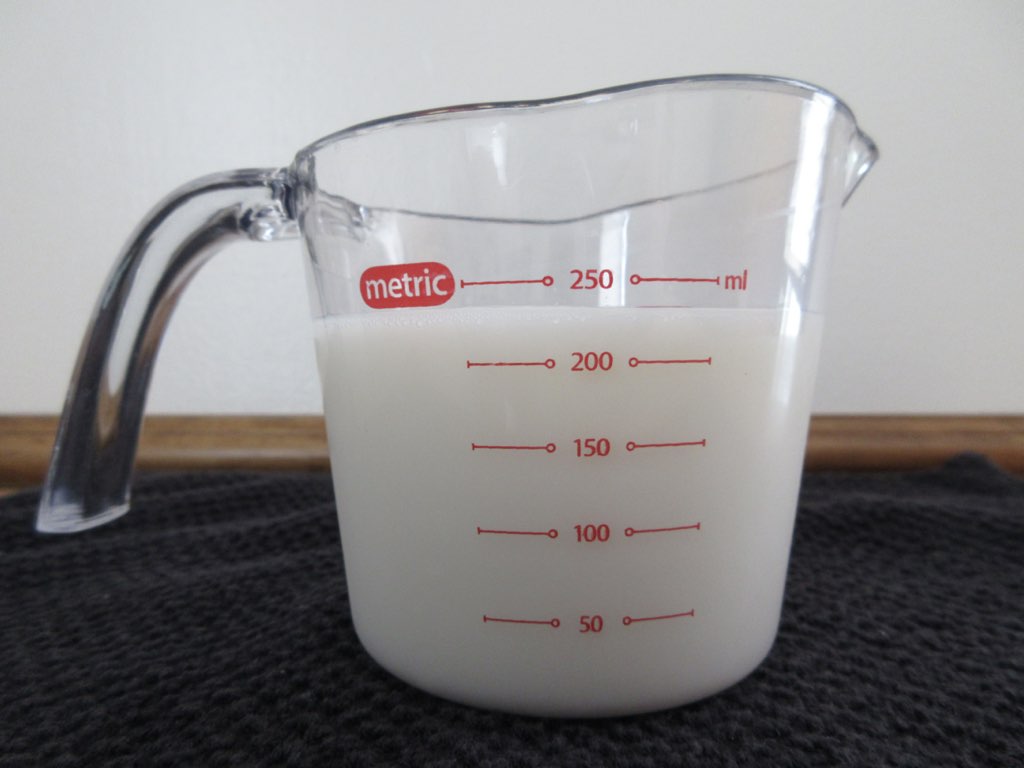
That’s 240mL for you using metric. 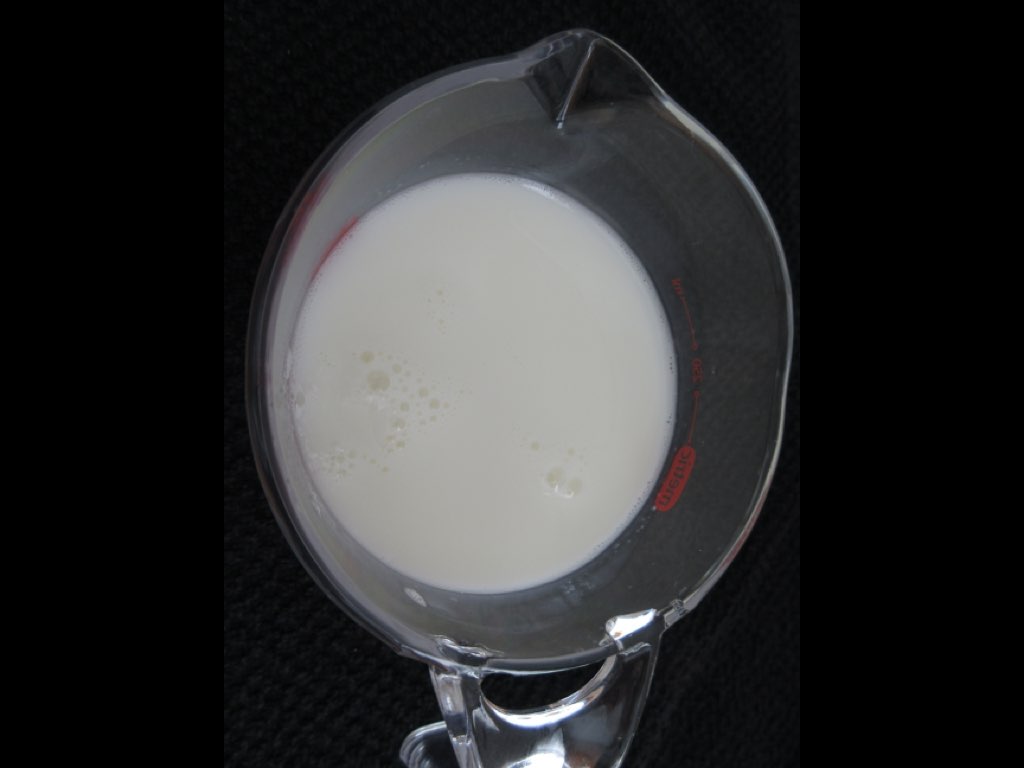
It will start to bubble after a few moments. 
And will separate. This is expected.
Here is a super brief video that shows how it easy this is to make. Hope this helps you on your way!
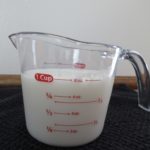
Buttermilk Substitute
Ingredients
- 1 cup (240mL) milk
- 1 tbs (15mL) vinegar or lemon juice
Instructions
- In a measuring cup, pour in one tablespoon of vinegar or lemon juice.
- Pour in milk until it reaches the one cup (240mL) line.
- It is ready to use for baking.
0 Comments